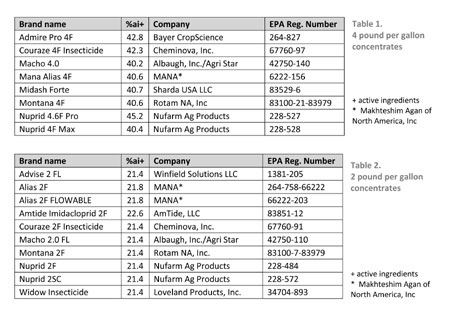Products for Preventive Control of Tobacco Aphids
The severe winter and apparent lack of an overwintering egg stage of the tobacco aphid may have limited survival of this insect to much farther south than normal. Our infestations begin with winged migrants that move north in the spring. The polar weather could mean a later than normal arrival in Kentucky this spring but this will depend on how rapidly populations can build in the South. The explosive growth potential of the insect will allow it to increase rapidly when it does arrive.
Systemic neonicotinoid (Group 4) insecticides (clothianidin, imidacloprid, and thiamethoxam) can be applied as tray drenches or in the transplant water for essentially season-long aphid control. The greatest risk of significant aphid infestations, and the potential need for preventive control, occurs on late set tobacco. However, consolidated acreages, and the need for thorough spray coverage and multiple applications, often makes a preventive approach more desirable than watching for economic infestations and treating if needed.
Clothianidin (Belay) and thiamethoxam (Platinum) are proprietary products but imidacloprid is available under many brand names and manufacturers. Dealers may switch brands from one season to the next based on price advantages. The products listed below (Tables 1 & 2) contain 2 or 4 pounds of imidacloprid per gallon and are labeled and registered in Kentucky for preventive aphid control (CDMS database).

There are slight differences in percent active ingredient among products. In addition, there are several products containing 1.6 lb of imidacloprid per gal that are labeled only for foliar application to control aphids on the crop. Pollinators can be exposed to imidacloprid residues when they visit flowers for nectar and pollen. Timely topping will remove flowers and minimize exposure to these important insects. Research has shown that topping burley tobacco at 10% to 25% bloom generally provides the best yield and quality. This means that 10% to 25% of the plants in a field will have at least one open flower. Dark tobacco can generally be topped anytime between the elongate bud state and 50% bloom without causing a significant impact on yield. (2013–14 KY & TN Tobacco Production Guide). Good stewardship of pesticides is essential to keep them available for use.∆